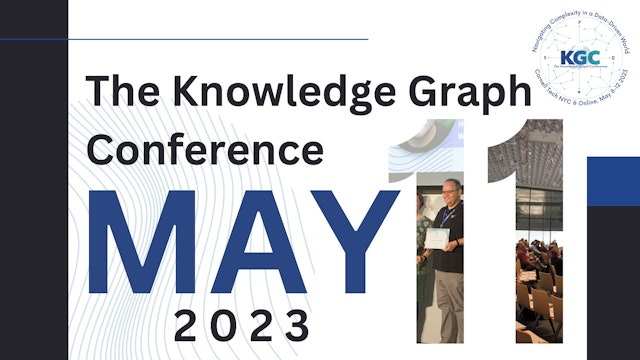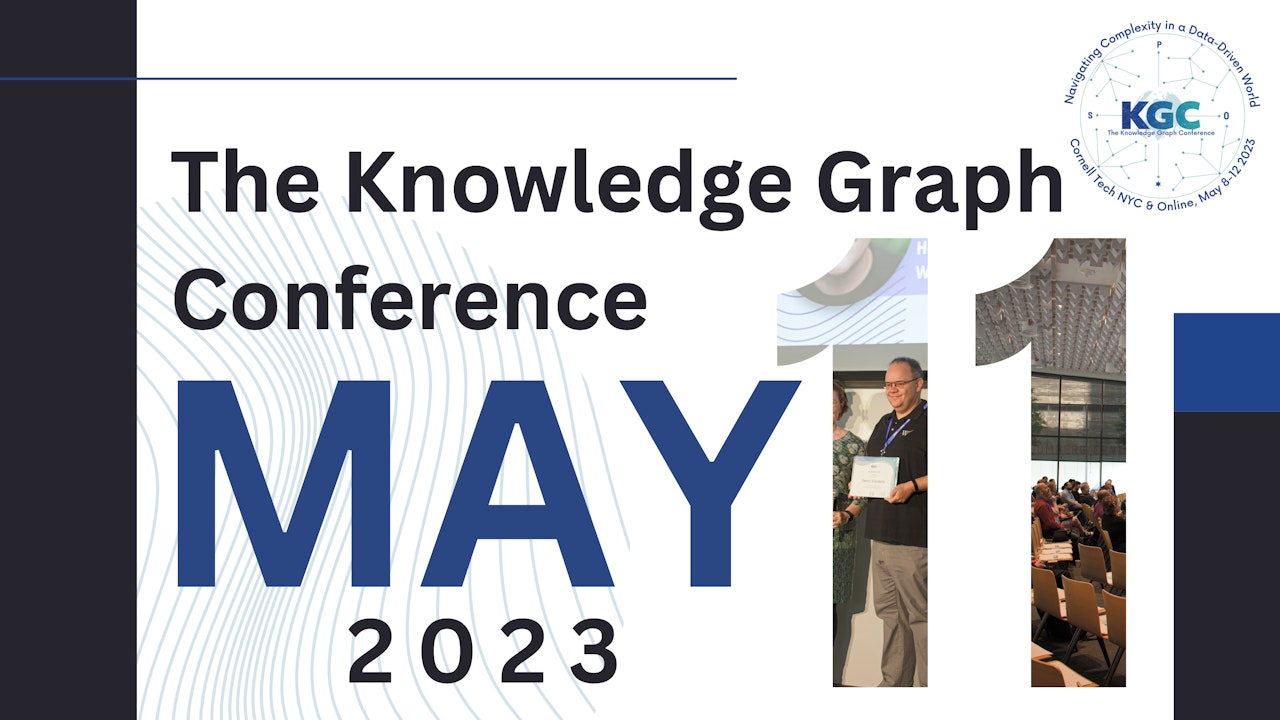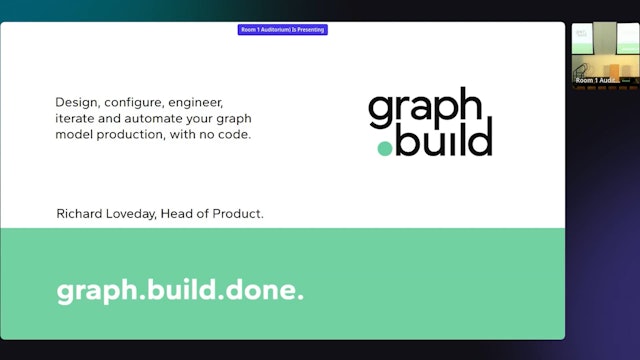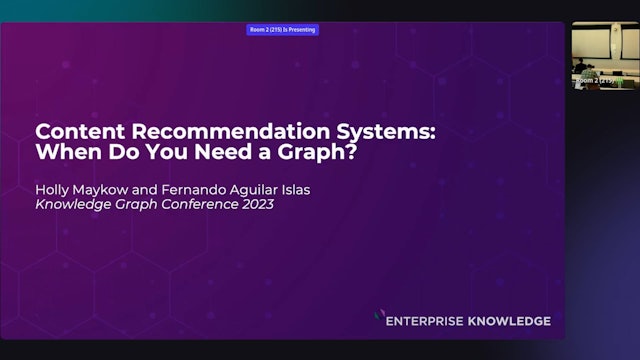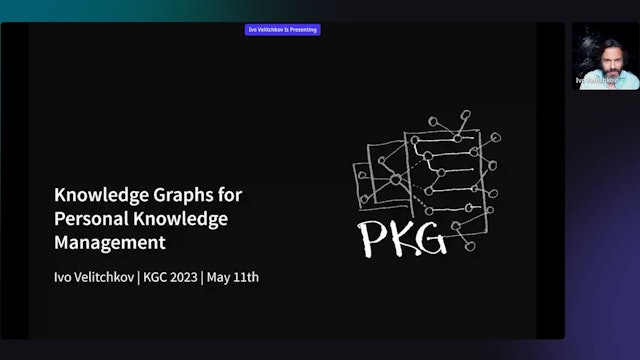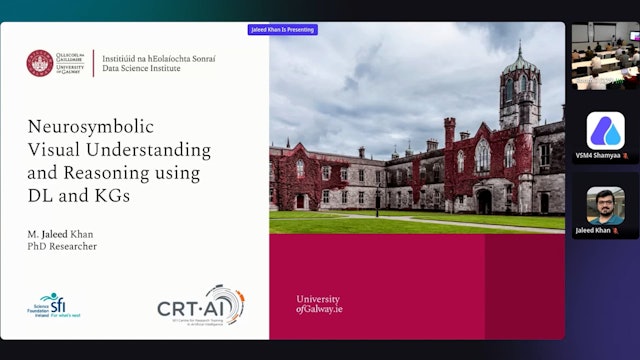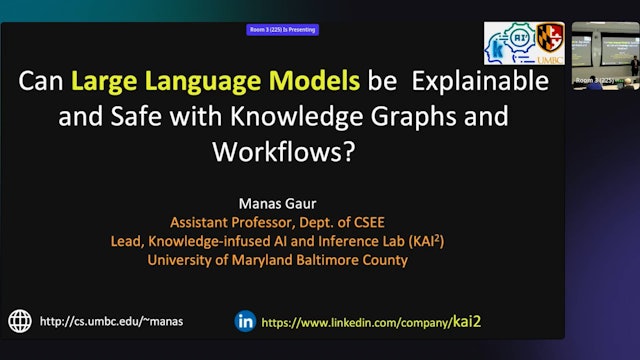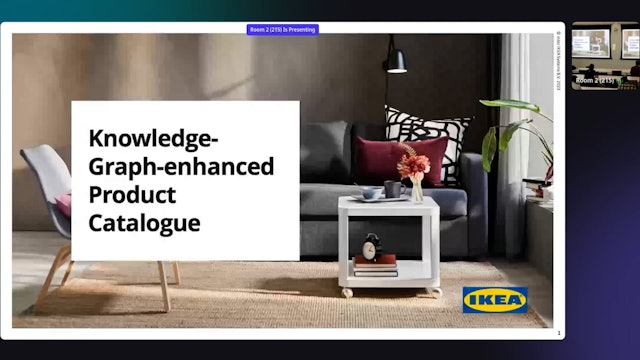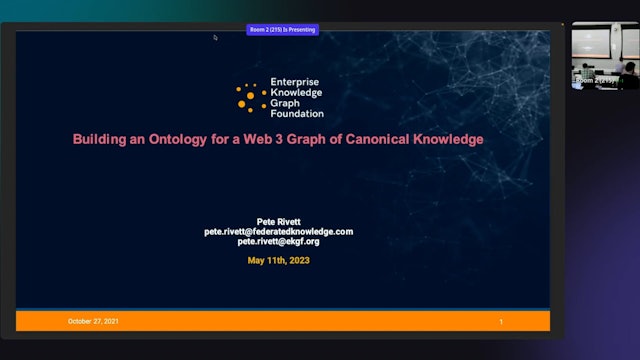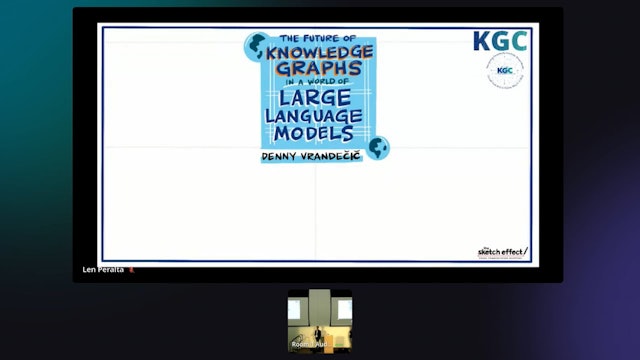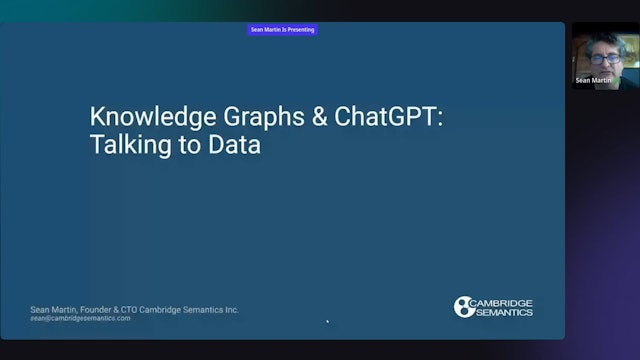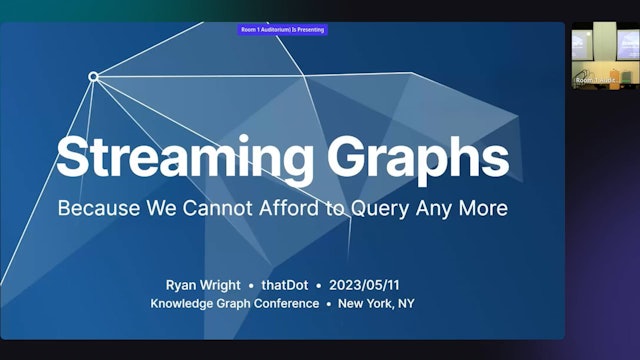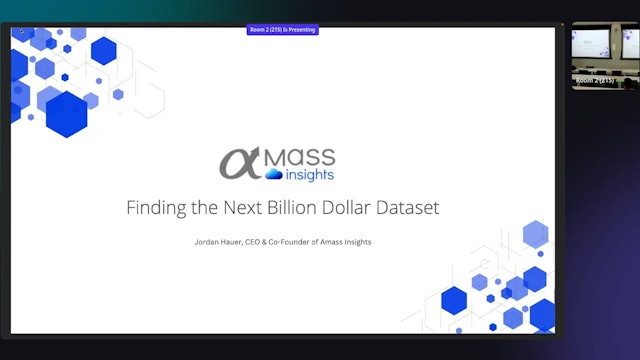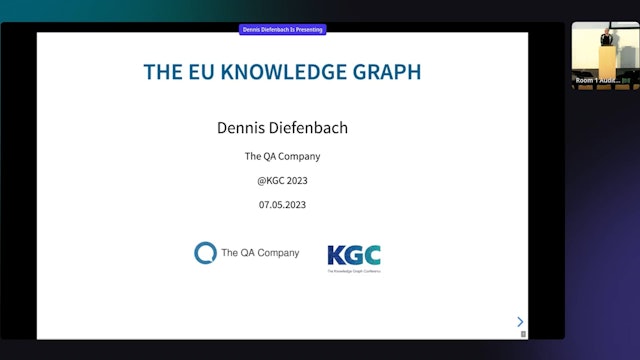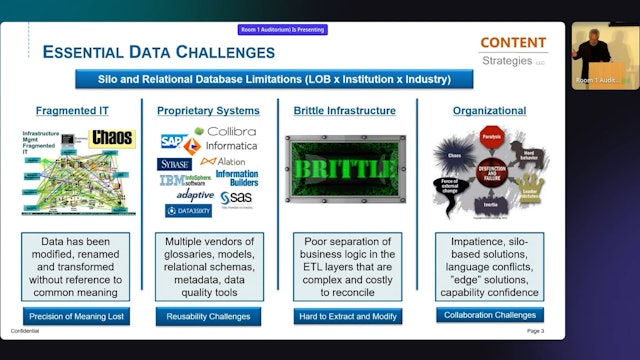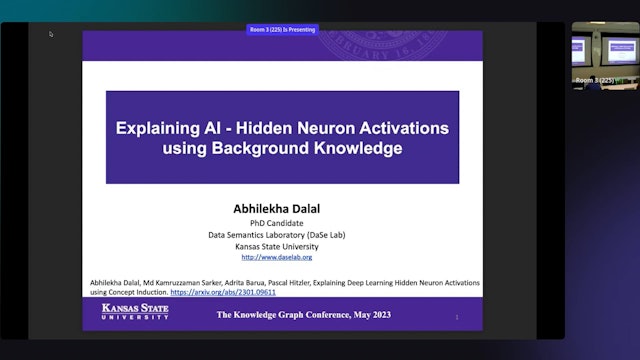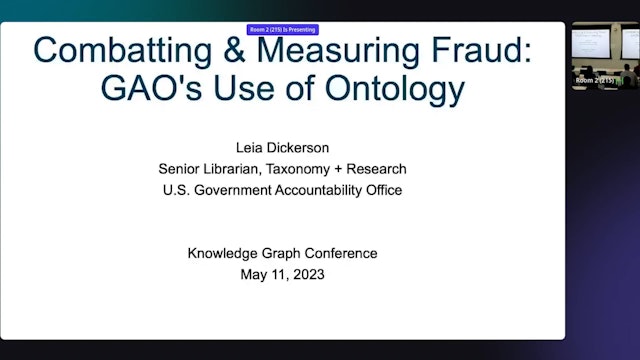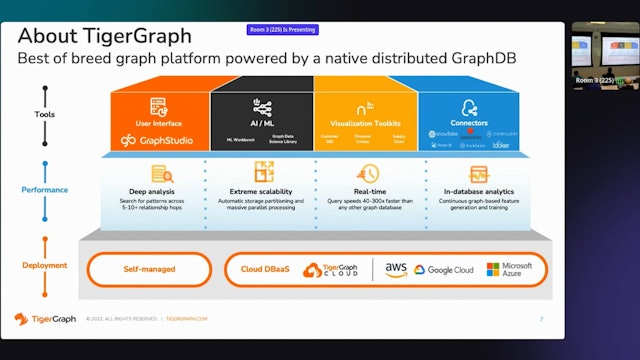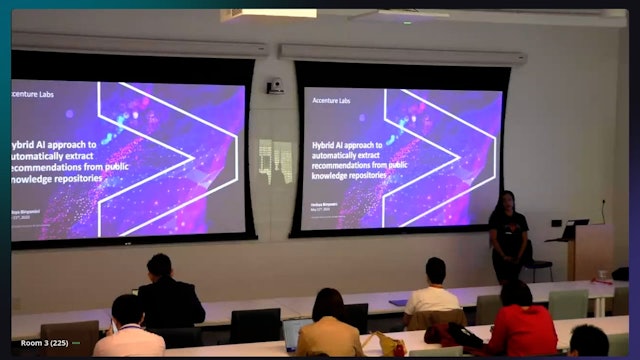May 11 | KGC 2023
-
graph.build.done
After 10+ years implementing knowledge graph solutions across many industries, we created graph.bulid, to greatly lower the time and cost of creating graph models, semantic or property, from any data.
First we will demonstrate our highly configurable, highly available, cloud ready, horizotally... -
Content Recommendation Systems: When Do You Need a Graph?
Recommendation systems are at the heart of many products we use today, helping us discover new music, expand our wardrobes, and navigate the massive amounts of information on the Internet to answer our search queries. In a world where efficiency and accuracy is paramount, and processing power and...
-
Knowledge Graphs for Personal Knowledge Management
Personal Knowledge Graphs graphs are a new and still marginal breed of knowledge graphs. But maybe they hold the biggest potential to revolutionize the way we work and think. We can even rethink personal computing. In this talk, Ivo will review the current state of play of PKG, bring some new per...
-
Neuralsymbolic Visual Understanding and Reasoning using Deep Learning and KGs
Visual AI has made incredible progress in basic vision tasks using deep learning techniques that can detect concepts in visual scenes accurately and quickly. However, the existing techniques rely on labelled datasets that lack common sense knowledge about visual concepts and have biased distribut...
-
Targeted Knowledge Infusion To Make Conversational AI Explainable and Safe
Conversational Systems (CSys) represent practical and tangible outcomes of advances in NLP and AI. CSys see continuous improvements through unsupervised training of large language models (LLMs) on a humongous amount of generic training data. However, when these CSys are suggested for use in domai...
-
Knowledge-Graph-enhanced Product Catalogue
In this presentation we will show how we are using curated information stored in the IKEA Knowledge Graph to generate valuable product data. The manual effort is done on a general level and is small in size compared to the generated product data. This approach proves that "a little semantics goes...
-
Building an ontology for a Web3 graph of canonical knowledge
Key aspects include:
– Balancing business focus with logic and precision; and use of AI-based ingestion
– Choice of predicates and entity types (classes), supplemented with taxonomies
– Entity disambiguation via disambiguation predicates and external identifier mapping
– Use of qualifiers for sup... -
How Knowledge Graphs foster interoperability in Data Spaces
This presentation shows the approach of making use of Knowledge Graphs in Data Spaces and Data Markets to foster data- and semantic interoperability. Interoperability is the enabler of efficient and sustainable data sharing between organisations, either in a certain industry or across industries,...
-
Keynote Session : KGC Ceremony
Large Language Models such as GPT or LLaMA are profoundly changing our understanding of what computers can do. What is the role of Knowledge Graphs in a future where Large Language Models may reign supreme? Both Knowledge Graphs and Large Language Models have incurable weaknesses: brittleness on ...
-
Knowledge Graphs and ChatGPT: Talking to Data v1
Sean Martin, Co-founder & CTO Cambridge Semantics Inc.
-
Streaming Graphs, Because We Cannot Afford to Query Anymore
Graphs help answer complex questions, but they have traditionally been far too slow to be used in high-volume streaming data applications. While graph _databases_ have served batch-processing use cases for decades, a new streaming architecture is showing profound results for modern high-volume da...
-
Finding the Next Million-Dollar Dataset: Data Sourcing Methods and Techniques
Sourcing valuable data has become a competitive advantage for many market-leading companies in the past several years. But finding that data and putting it to use efficiently and effectively is an opaque and complicated process with innumerable steps and gatekeepers. Jordan Hauer has been an expe...
-
Business Impact KGs and Visualisation of Relationship Context
Business impact datasets from supply chains are modelled on KGs with emphasis on rich relationship context. KGs vary in scale from millions to billions of entities and require parallel processing techniques for building, traversing, and computation and are built on an in memory horizontally scala...
-
MatKG: The largest Knowledge Graph in Material Science
In the work, we present MatKG, the largest knowledge graph in the field of material science. It contains over 80,000 unique entities and over 5 million statements covering several topical fields such as inorganic oxides, functional materials, battery materials, metals and alloys, polymers, cement...
-
The EU knowledge Graph
The EU Knowledge Graph at the European Commission
The European Commission is maintaining a Knowledge Graph using Wikibase, the same software that is running behind Wikidata (one of the most successful public Knowledge Graphs). In this talk we describe:
- the content of the EU Knowledge Graph
... -
The Rationale for Semantic Data Management: Making the Case
This is a call for engagement on how we define and present the complete business rationale for data management using semantic standards. I will outline the results of my research to demystify knowledge graph and address the root cause of the ‘data dilemma.’ This call for information literacy at...
-
Explainable AI using Background Knowledge
One of the current key challenges in Explainable AI is in correctly interpreting activations of hidden neurons. It seems evident that accurate interpretations thereof would provide insights into the question what a deep learning system has internally detected as relevant on the input, thus liftin...
-
Combatting & Measuring Fraud: GAO's Use of Ontology
Fraud hurts the integrity of US federal programs and erodes the public’s trust in the government. To assist agencies with combatting fraud and to improve its measurement through common definitions, GAO has developed the GAO Fraud Ontology. The model addresses the key elements of what occurs in a ...
-
Graph Embedding Techniques - Matrix Factorization to Deep Learning
Graph embeddings can be used for a variety of applications, including recommendation, fraud detection, and other machine learning tasks. In this work, we aim to walk through various different embedding techniques, starting with spectral approaches, moving towards graph neural networks, and finall...
-
When Not to Use a Graph db for Your Knowledge Graph
When people think of knowledge graphs and graph analytics they reflexively think they need a specialized database. That answer is often incomplete or just wrong for their workload.
We’ll analyze the 11 access patterns involved in graph analytics and build a logical and physical reference architec... -
The Missing Link in Knowledge Graphs
Graph-based technologies are appealing because they promise more flexibility than other database technologies. However, it turns out that graph-based databases still require data to be structured and are not that different from traditional databases, therefore creating disappointment for end user...
-
Structured Regulatory Compliance Through Knowledge Models
Regulatory complexity is causing a heavy burden on financial institutions, especially when markets expect more rapid innovation to serve its needs. Meanwhile, regulators keep placing more and more expectations to protect the financial, economic and social systems. Despite AI’s great strides in te...
-
Using a Hybrid AI Approach to Automatically Extract Recommendations
The emerging landscape of deep learning and knowledge graph technologies provides vast opportunities to use public repositories as a source of knowledge for recommendations. Often, the knowledge is represented as a knowledge graph, and a recommendation regarding an entity instance is extracted by...
-
Towards Employing KG & Graph Neural Networks for Processing Healthcare Data
Graphs are ubiquitous, they form a language for describing entities and their interactions. They are emerging as a powerful data analytic tool for addressing difficult real-world problems and more recently graph representation learning has revolutionized AI and modern data science tasks. In Optum...

